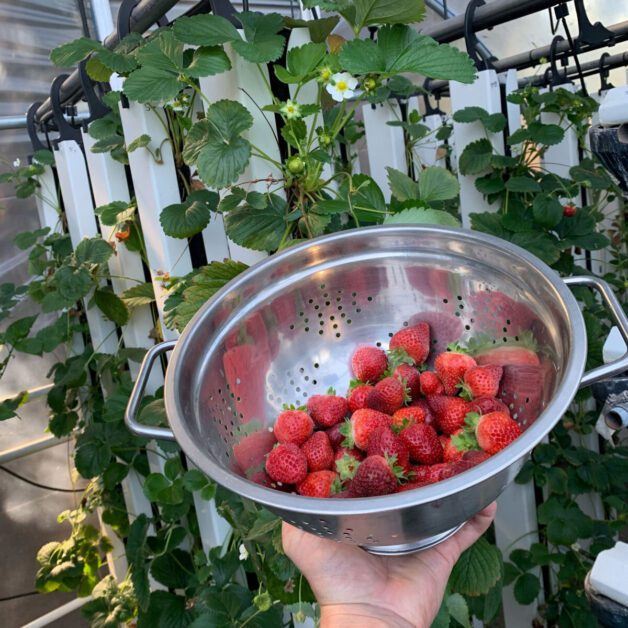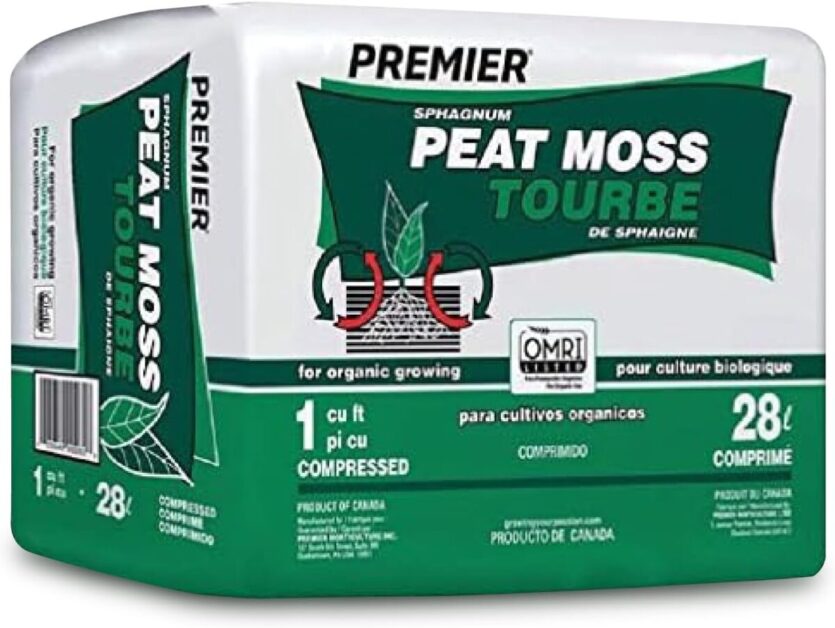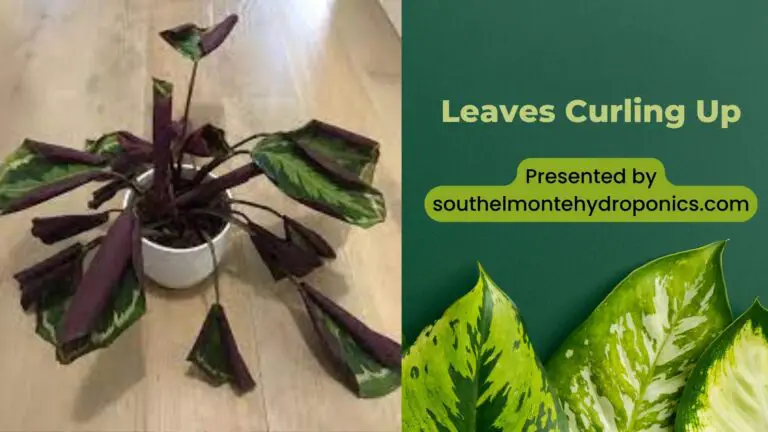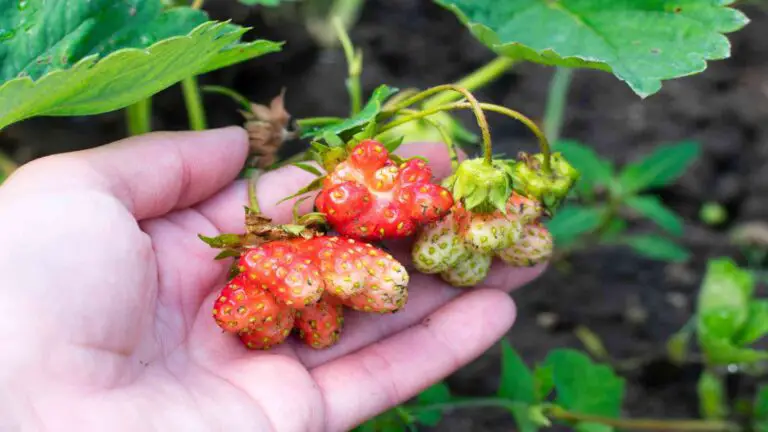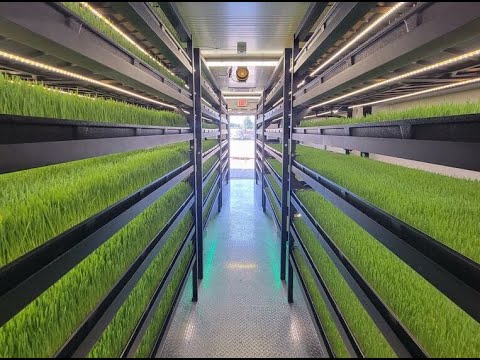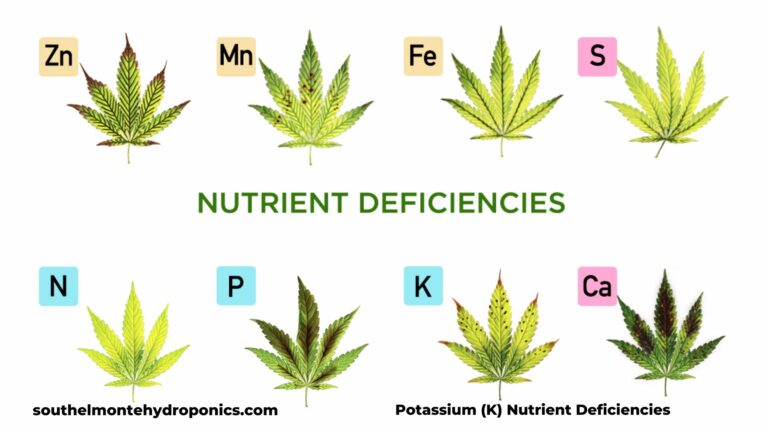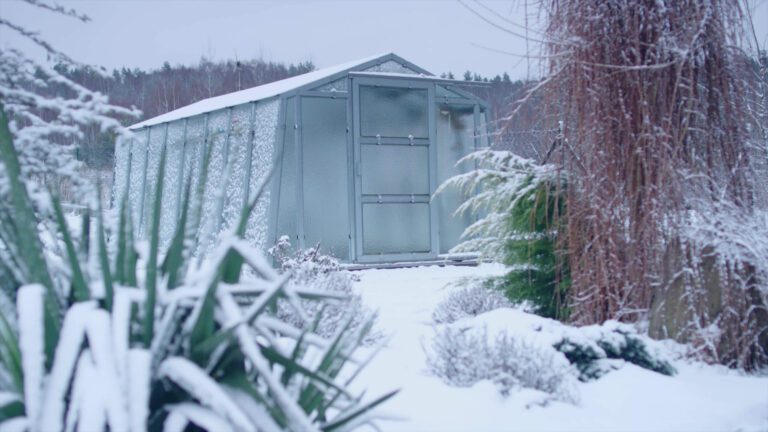Sweet Success: Tips & Tricks for Juicy Strawberries via Indoor Hydroponics
Welcome to the juicy world of indoor hydroponics where strawberries thrive and success is as sweet as the fruit itself. Did you know that growing strawberries hydroponically can yield larger, juicier berries compared to traditional soil methods? Get ready to embark on a delicious journey filled with tips and tricks to ensure your indoor strawberry garden flourishes. From optimizing nutrient solutions to providing the perfect environment, we’ve got you covered. Whether you’re a seasoned hydroponic enthusiast or a curious beginner, this blog is your go-to resource for cultivating plump, flavorful strawberries right in the comfort of your own home. Let’s dive in and discover the secrets to sweet success!
Table of Contents
Benefits of Indoor Hydroponics for Growing Strawberries
Indoor hydroponics offers numerous benefits for those looking to grow strawberries all year round.

- Optimal Growing Conditions: Hydroponics allows precise control over factors like water, nutrients, light, and temperature, optimizing the environment for strawberry cultivation. Unlike soil-based methods, growers can adjust these variables to maximize plant health and yield.
- Space Efficiency: Indoor hydroponic systems eliminate the need for soil, enabling vertical growth and efficient space utilization. This is especially beneficial for urban gardeners or those with limited gardening areas, making it possible to grow strawberries in places where traditional gardening isn’t feasible.
- Pest and Disease Control: The controlled environment of hydroponics minimizes the risk of soil-borne pests and diseases, reducing reliance on pesticides and chemical interventions. This not only promotes healthier plants but also contributes to environmentally friendly gardening practices.
- Year-Round Harvest: With hydroponics, strawberry enthusiasts can enjoy a continuous supply of fresh, flavorful berries regardless of the season. By overcoming the limitations of traditional gardening, indoor hydroponics offers a sustainable and convenient way to cultivate high-quality produce throughout the year.
Choosing the Right Strawberry Varieties for Hydroponic Cultivation
When it comes to choosing the right strawberry varieties for hydroponic cultivation, there are several factors to consider. One of the most important aspects is selecting varieties that are well-suited for indoor growing conditions. Certain strawberry cultivars thrive in hydroponic systems due to their adaptability to controlled environments.
| Variety | Advantages | Disadvantages | Characteristics |
|---|---|---|---|
| Albion | – Sweet flavor and high yields | – Requires proper pruning and maintenance | – Large fruit size |
| Seascape | – Disease resistance and consistent fruit production | – May need additional support due to heavy fruit load | – Reliable performer |
| Mara de Bois | – Productive with firm, good-sized fruit and pleasant flavor | – Slightly more delicate than other varieties | – Unique taste profile |
| Quinault | – Self-pollinating and wide berries | – Smaller berry size compared to some varieties | – Suitable for continuous harvest |
| Tribute | – Medium to large berries | – Requires attention to water and nutrient management | – Good balance of sweetness and acidity |
Remember that each variety has its own strengths and considerations. Choose based on your preferences, available space, and hydroponic system. Happy strawberry growing! 🍓🌱
Understanding the Nutrient Requirements of Strawberries in Hydroponics
Strawberries are a popular choice for hydroponic cultivation due to their potential for high yields and exceptional flavor. To ensure successful growth and development, it is essential to understand the nutrient requirements of strawberries in hydroponics. These delicious fruits need a balanced supply of essential nutrients for optimal growth and productivity.

- Nitrogen (N):
- Promotes vigorous vegetative growth and ensures a healthy plant structure in strawberries.
- However, excessive nitrogen levels can lead to excessive foliage and reduced fruit production.
- Balancing nitrogen levels is crucial for encouraging healthy growth while maintaining fruit yield.
- Phosphorus (P):
- Supports the formation of strong root systems and flower development in strawberries.
- Adequate phosphorus levels are essential during early growth stages and flowering for overall plant development.
- Potassium (K):
- Regulates water uptake, enhances disease resistance, and promotes proper fruit development in strawberries.
- Potassium deficiencies can lead to weak plants, smaller fruit, and decreased yield.
- Providing a sufficient supply of potassium throughout the growing season is vital for optimal strawberry production.
- Micronutrients:
- Essential for enzymatic processes, chlorophyll production, and overall plant health.
- Includes calcium, magnesium, iron, manganese, and others.
- Implementing a balanced nutrient solution with all essential macronutrients and micronutrients is crucial for healthy and robust strawberry plants in hydroponics.
As we continue to explore the intricacies of strawberry cultivation in hydroponics, it is crucial to delve further into the specific nutrient requirements during different growth stages. By understanding how and when to provide the right nutrients to the plants, gardeners can maximize their strawberry harvest and savor the delectable taste of homegrown strawberries all year round.
Setting Up a Hydroponic System for Optimal Strawberry Growth
When it comes to setting up a hydroponic system for optimal strawberry growth, there are several key factors to consider. The first step is to determine the size and scale of your operation. Are you planning to grow strawberries on a small scale for personal use, or do you have ambitions of commercial production? This will help you determine the size of your system and the amount of space you will need.

Consider options such as Nutrient Film Technique (NFT), Deep Water Culture (DWC), and vertical stacking systems.
Research each system’s advantages and considerations to choose the one that best fits your needs and resources.
Gather essential items like grow lights, pumps, timers, pH meters, and nutrient solutions.
Invest in high-quality equipment to ensure optimal performance and success in strawberry cultivation.
Maintain proper temperature, humidity, and airflow in the growing area to support healthy strawberry growth.
Provide adequate lighting, with LED grow lights being a popular choice for energy efficiency and full spectrum coverage.
In conclusion, setting up a hydroponic system for optimal strawberry growth requires careful planning and consideration. From selecting the right system to providing the necessary equipment and creating the ideal growing environment, each step plays a crucial role in the success of your cultivation. By paying attention to these factors, you can create an efficient and productive hydroponic system for growing delicious and healthy strawberries.
The Nitial Stackable Vertical Stacking System has revolutionized my gardening experience, particularly in urban settings with limited space. Its space-saving design allows me to grow a variety of plants vertically, maximizing every inch of available space. As a strawberry enthusiast, I’ve found this system to be especially beneficial, as it provides an ideal environment for growing and harvesting strawberries.
However, I’ve encountered some challenges with weight distribution, especially when fully stacked with plants and soil. During windy conditions, the system can become unstable, requiring additional support or reinforcement to prevent tipping. Despite this minor inconvenience, the convenience and versatility of the Nitial Stackable Vertical Stacking System far outweigh its drawbacks. Overall, it has transformed my small balcony into a lush and productive garden oasis, allowing me to enjoy fresh herbs, flowers, and succulents, all within arm’s reach.
- Space-saving Design: The stackable design allows for vertical gardening, making efficient use of limited space, whether indoors or outdoors.
- Versatility: Suitable for a variety of plants, including strawberries, herbs, flowers, and succulents, providing flexibility in gardening options.
- Easy Assembly: The system is easy to assemble, requiring minimal tools and effort, making it accessible for beginner gardeners.
- Durable Construction: Made from sturdy materials, the stacking system is built to withstand outdoor elements, ensuring long-lasting use.
- Water Efficiency: The vertical design promotes efficient water usage, with excess water from higher tiers dripping down to lower tiers, minimizing waste.
- Improved Air Circulation: The tiered structure allows for better air circulation around plants, reducing the risk of diseases and promoting healthier growth.
- Aesthetic Appeal: The vertical arrangement of plants creates an attractive display, adding visual interest to any space, whether it be a garden, balcony, or patio.
- Limited Plant Capacity: Each stackable unit may have a limited capacity for plants, potentially restricting the number of plants that can be grown compared to traditional gardening methods.
- Weight Distribution: When fully stacked, the weight of the system and plants may become unevenly distributed, posing stability challenges, especially in windy conditions.
- Maintenance Challenges: Watering and tending to plants in higher tiers may require additional effort and equipment, such as a ladder or watering wand, leading to maintenance challenges.
- Potential Overcrowding: As plants grow, there may be a risk of overcrowding in the vertical tiers, limiting airflow and light penetration, which could affect plant health and productivity.
- Initial Cost: The initial investment in purchasing the stacking system may be higher compared to traditional gardening containers or setups, potentially deterring some budget-conscious gardeners.
- Limited Plant Variety: The design of the stacking system may not accommodate larger or sprawling plants, limiting the variety of species that can be grown effectively.
- Installation Location: Finding a suitable location with adequate sunlight and stability for installing the stacking system may be challenging, especially for urban or apartment dwellers with limited outdoor space.
Selecting the Best Growing Medium for Strawberries in Indoor Hydroponics
When it comes to selecting the best growing medium for strawberries in indoor hydroponics, there are several options to consider. Each medium has its own advantages and limitations, so it’s important to choose one that suits the specific needs of your strawberries.
Coconut coir

One popular choice for growing strawberries in hydroponics is coconut coir. This natural fiber made from coconut husks is highly absorbent, providing excellent moisture retention while still allowing for proper aeration. Coconut coir is also pH-neutral, which helps maintain the ideal pH levels for strawberry growth. Moreover, it is a sustainable option, as it is a renewable resource and can be easily sourced.
rockwool
Another viable option is rockwool, a mineral-based growing medium. Rockwool has excellent water-holding capacity and provides good drainage, preventing waterlogged roots. It also offers a stable pH environment for the plants. However, it’s important to note that rockwool fibers can irritate the skin and respiratory system, so proper precautions should be taken when handling it.
Peat moss
Peat moss is another commonly used growing medium. It is organic and provides good water retention while still allowing for proper drainage. Peat moss also has a slightly acidic pH, which is beneficial to strawberry plants. However, it’s worth considering the environmental impact of harvesting peat moss, as it involves the removal of natural peat bogs.
Ultimately, the best choice of growing medium for strawberries in indoor hydroponics will depend on your individual preferences, available resources, and specific growing conditions. It’s essential to conduct thorough research and consider the needs of your plants to ensure optimal growth and productivity.
The Premier Horticulture 0280P Pro Moss Horticulture Retail Peat Moss has been a game-changer in my gardening endeavors. Its exceptional water retention properties have ensured that my plants receive consistent moisture levels, promoting healthy growth and vitality. Mixing it with soil has significantly improved soil structure, providing better aeration and drainage, which has been beneficial for root development.
However, I’ve been mindful of the environmental concerns associated with peat moss harvesting, such as habitat destruction and carbon emissions. Despite these concerns, the organic nature of peat moss and its pH neutrality make it a versatile choice for various plants in my garden. While it may lack in nutrient content, the long-lasting benefits it provides to the soil outweigh this drawback. Overall, the Premier Horticulture peat moss has been an indispensable addition to my gardening toolkit, contributing to lush, thriving plants and a flourishing garden ecosystem.
✅ Improved Soil Structure: When mixed with soil, peat moss helps improve soil structure by promoting aeration and drainage, creating an optimal environment for root development.
✅ Organic Matter: Peat moss is a natural, organic material derived from decomposed plant matter, making it environmentally friendly and safe for use in gardening.
✅ pH Neutral: Peat moss has a neutral pH, which makes it versatile for use with a wide range of plants, including acid-loving varieties like blueberries and azaleas.
✅ Weed Suppression: When applied as a mulch, peat moss helps suppress weed growth by creating a barrier that inhibits weed germination and establishment.
✅ Lightweight: Peat moss is lightweight and easy to handle, making it convenient for transportation, storage, and application in the garden.
✅ Long Lasting: Peat moss has a slow decomposition rate, providing long-lasting benefits to the soil and plants.
❌ Limited Nutrients: Peat moss has low nutrient content, so additional fertilization may be required to meet the nutritional needs of plants.
❌ Acidification: Over time, peat moss can contribute to soil acidification, which may affect the pH balance and nutrient availability for some plants.
❌ Cost: Peat moss can be relatively expensive compared to other soil amendments, especially if purchasing in large quantities for extensive gardening projects.
❌ Limited Availability: In some regions, peat moss may be less readily available or more costly due to transportation and sourcing constraints.
❌ Compaction: Peat moss has a tendency to compact over time, reducing its effectiveness in improving soil structure and drainage.
❌ Sterile: Peat moss is sterile, which means it does not contain beneficial microorganisms that contribute to soil health and fertility, requiring the addition of compost or other organic amendments for microbial activity.
Providing Adequate Lighting for Strawberry Plants in Hydroponics
To ensure optimal growth and development in strawberry plants grown in hydroponic systems, providing adequate lighting is crucial. Adequate lighting plays a vital role in stimulating photosynthesis, which is essential for the production of carbohydrates and ultimately, fruit yield.
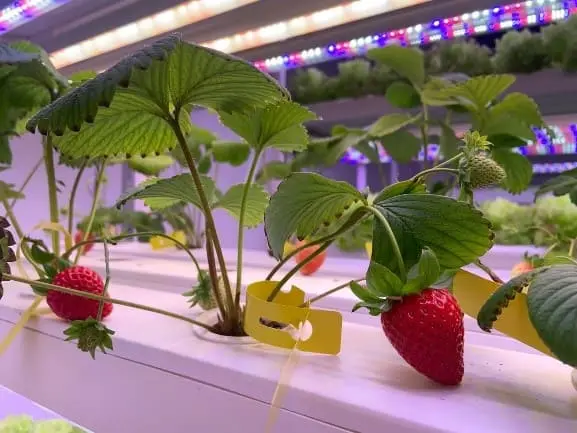
- LED Lighting for Hydroponic Strawberry Cultivation:
- LED lights are recommended for their energy efficiency and ability to emit specific wavelengths optimal for plant growth.
- They can be customized to provide the ideal spectrum and intensity required by strawberry plants at different growth stages.
- Lighting Duration:
- Provide a minimum of 12-16 hours of light per day to mimic natural sunlight conditions necessary for strawberry growth.
- Uniform Light Distribution:
- Ensure uniform distribution of light across the entire plant canopy for optimal growth.
- Position LED lights at the correct distance and angle to achieve even light distribution and minimize shading.
- Regular Monitoring and Adjustment:
- Monitor light intensity regularly and adjust as needed to maintain optimal growing conditions for strawberry plants in hydroponics.
By providing adequate lighting, hydroponic strawberry growers can enhance plant growth, increase fruit yield, and ultimately achieve high-quality strawberries. In the next section, we will delve into the critical factors to consider when maintaining proper temperature and humidity levels for successful strawberry cultivation in a hydroponic setup.
Maintaining Proper Temperature and Humidity Levels for Strawberry Cultivation
Maintaining proper temperature and humidity levels is crucial for successful strawberry cultivation in a hydroponic system. Temperature and humidity play a significant role in the growth, development, and overall health of the strawberry plants.
- Temperature Control:
- Optimal temperature range for strawberry growth is 60°F to 75°F (15°C to 24°C).
- Temperatures below 40°F (4°C) can cause frost damage, while temperatures above 80°F (27°C) can hinder fruit development.
- Install a climate control system with temperature sensors and heaters or coolers to maintain ideal temperature conditions.
- Regularly monitor temperature and make adjustments as needed to keep plants within the optimal range.
- Humidity Management:
- High humidity can promote fungal diseases like powdery mildew, while low humidity can stress plants.
- Aim for a relative humidity of 60% to 70% during the vegetative stage and 50% to 60% during flowering and fruiting.
- Use a humidity controller and a dehumidifier if necessary to regulate humidity levels effectively.
- Maintaining optimal humidity conditions helps prevent disease and stress, ensuring healthy strawberry growth.
Watering Techniques and Frequency for Hydroponic Strawberries
Watering is a critical aspect of hydroponic strawberry cultivation, as it directly affects the growth, development, and overall health of the plants. Proper watering techniques and frequency are key factors in ensuring optimal nutrient uptake and maintaining the ideal moisture levels in the root zone.
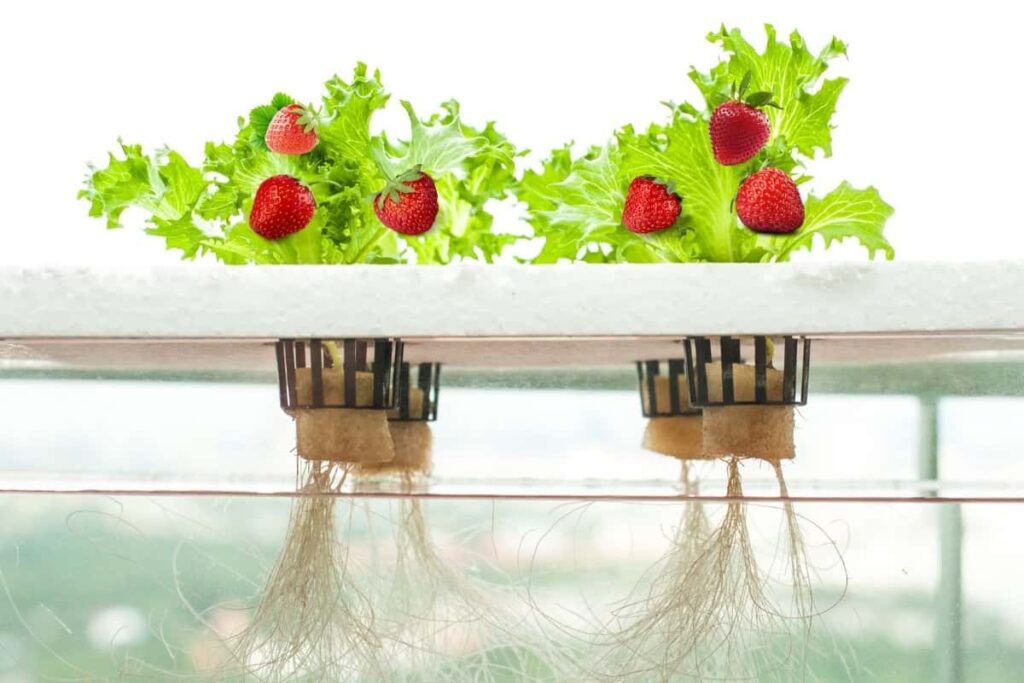
- Watering Frequency in Hydroponics:
- Depends on factors like hydroponic system type, plant size and stage, and environmental conditions.
- Generally,water hydroponic strawberries two to three times a day for short durations to prevent waterlogging and promote root oxygenation.
- Monitoring Moisture Levels:
- Regularly assess moisture levels of the growing medium using a moisture meter or visual inspection.
- Aim for moist but not saturated conditions to avoid stress to the plants and ensure proper nutrient uptake.
- Balancing Moisture:
- Avoid letting the growing medium dry out completely, as it can hinder plant growth.
- Maintain a balance between moist and well-drained conditions for optimal strawberry growth in hydroponics.
- Adjusting Frequency Based on Factors:
- Consider environmental factors such as temperature, humidity, and strawberry variety when determining watering frequency.
- Higher temperatures and lower humidity may require more frequent watering to compensate for increased evaporation rates.
- Conversely, cooler temperatures and higher humidity may necessitate reducing the frequency to prevent excess moisture accumulation.
Remember, providing consistent and appropriate moisture levels is vital for hydroponic strawberry plants, as it directly affects their growth, fruit development, and overall yield. By closely monitoring the moisture levels and adapting the watering technique according to the specific conditions, you can ensure optimal water uptake and foster healthy and productive hydroponic strawberries.
Controlling pH Levels for Healthy Strawberry Growth in Hydroponics
Maintaining the right pH levels is crucial for healthy strawberry growth in hydroponics.
- Strawberries thrive in slightly acidic conditions, with an optimal pH range between 5.8 and 6.2.
- Deviations from this range can hinder nutrient uptake, leading to nutrient deficiencies or toxicities.
- To control pH levels in your hydroponic system, start by monitoring the pH regularly using a pH meter or test kit.
- Adjustments can be made using pH up or pH down solutions.
- When the pH is too high, add pH down solution in small increments, allowing time for it to mix thoroughly before retesting.
- Conversely, if the pH is too low, add pH up solution incrementally and monitor the changes. Aim for gradual adjustments rather than drastic swings to avoid shocking the plants.
Managing Nutrient Solution Concentrations for Maximum Strawberry Yield
To achieve maximum strawberry yield in indoor hydroponics, managing nutrient solution concentrations is crucial. The proper balance of nutrients is essential for the growth and development of healthy strawberry plants. A well-formulated nutrient solution provides the necessary elements for the plants to thrive and produce abundant, high-quality fruits.
- Nutrient Needs Throughout Growth Stages:
- Higher nitrogen (N) levels during vegetative stage for leaf and stem development.
- Increased phosphorus (P) and potassium (K) levels during flowering and fruiting stage to support flower and fruit formation.
- Regular Monitoring and Adjustment:
- Regularly monitor nutrient solution’s electrical conductivity (EC) and pH levels to determine nutrient status.
- Adjust concentrations of specific nutrients in the solution as needed to maintain optimal growth conditions.
- Variability in Nutrient Formulations:
- Different nutrient solution formulations and ratios can be utilized based on growth phase and desired yield.
- Commercially available hydroponic nutrient solutions formulated for strawberries offer convenient options with labeled instructions for proper usage.
In conclusion, managing nutrient solution concentrations plays a vital role in achieving maximum yield in indoor hydroponic strawberry cultivation. By providing the right balance of nutrients at different growth stages, growers can ensure healthy plant development, abundant flowering, and bountiful fruit production. Regular monitoring, testing, and adjustment of the nutrient solution are essential practices for maintaining optimal growing conditions.
Preventing and Managing Common Pests and Diseases in Hydroponic Strawberries
Common pests and diseases can pose a significant threat to the health and productivity of hydroponic strawberry plants. As a gardener or hydroponics enthusiast, it is crucial to take proactive measures to prevent and manage these issues effectively. By implementing proper strategies and maintaining a vigilant approach, you can ensure the longevity and vitality of your strawberry crop.

Regularly inspect and sanitize hydroponic system to prevent debris accumulation and eliminate breeding grounds for pests.
Quarantine new plants or materials before introducing them to prevent potential pest or pathogen transmission.
Provide proper plant nutrition and balanced nutrient solutions to strengthen plants’ immune systems.
Monitor and adjust pH and nutrient levels regularly to ensure optimal growing conditions for your strawberry plants.
Space plants adequately to promote air circulation and minimize disease spread.
Utilize proper pruning and training techniques to redirect energy towards fruit production and maintain plant health.
By implementing these preventive measures, you can minimize the risks and ensure healthy growth for your hydroponic strawberry plants.
Pruning and Training Techniques for Enhanced Strawberry Production
When it comes to enhancing strawberry production in indoor hydroponics, pruning and training techniques play a crucial role. Pruning is an essential practice that helps maintain the overall health and vigor of the strawberry plants, while training allows for better utilization of space and promotes optimal fruit development.

- Pruning Objectives:
- Remove old leaves and runners to improve air circulation, reducing the risk of fungal diseases and pests.
- Redirect plant energy towards fruit production by eliminating unnecessary vegetative growth.
- Ensure each plant receives adequate light for enhanced fruit development.
- Training Techniques:
- Employ the single-crown system for strawberries in hydroponics.
- Space plants apart to allow air circulation, light penetration, and room for root expansion.
- Train plants to develop a single, strong crown as the main fruit-bearing structure.
- Support the crown with trellises or stakes to prevent bending or breaking under the weight of ripe strawberries.
By practicing effective pruning and training techniques, indoor hydroponic gardeners can maximize strawberry yield, promote healthier plants, and achieve superior fruit quality. These strategies not only optimize space utilization but also contribute to the overall efficiency of the hydroponic system. As you embark on your journey to enhance strawberry production, remember that proper pruning and training are essential steps towards success.
Pollination Methods for Indoor Hydroponic Strawberry Plants
To successfully grow strawberries in an indoor hydroponic system, proper pollination methods are crucial. Unlike outdoor strawberries, which are naturally pollinated by insects and wind, indoor hydroponic strawberry plants require manual intervention for effective pollination. The absence of natural pollinators necessitates the use of alternate techniques to ensure the transfer of pollen, resulting in robust fruit production.
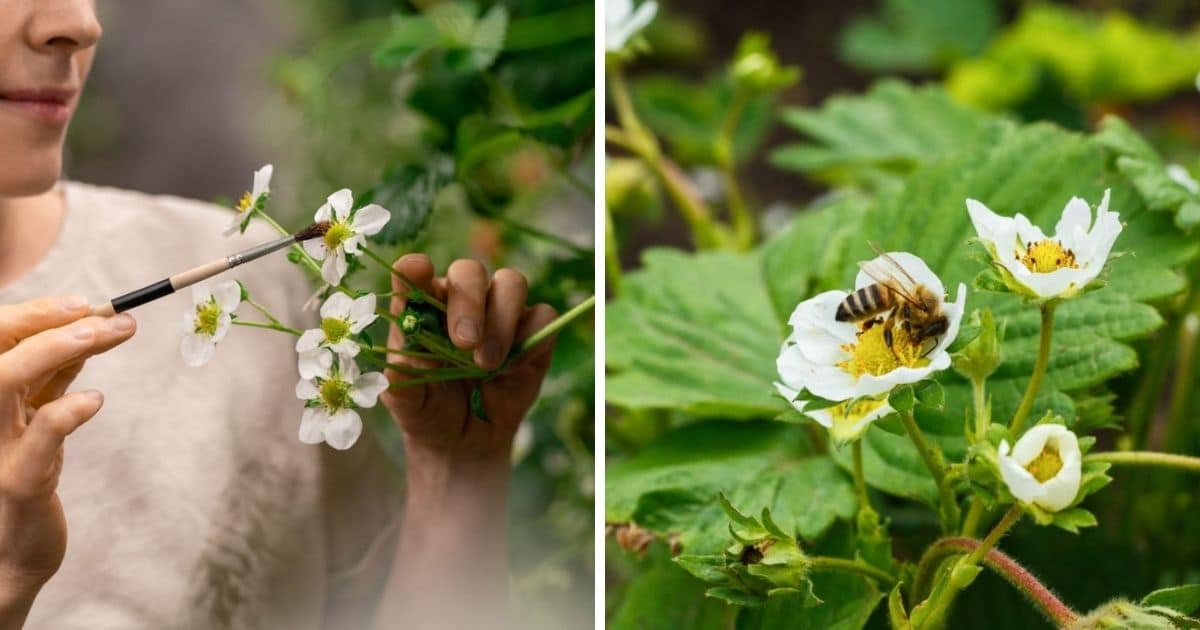
Hand-Pollination Technique:
- Gently shake strawberry flowers or use a small brush to transfer pollen from the stamen to the pistil.
- Ensures each flower receives adequate fertilization, maximizing fruit development.
- Provides control over the pollination process, allowing selection of the healthiest and most ready flowers for fertilization.
Use of Electric Toothbrushes or Vibrating Tools:
- Gently press vibrating tools against the flower’s stamen to dislodge pollen and aid in settling it onto the pistil.
- Mimics natural insect vibrations, stimulating the pollination process.
- Exercise caution to avoid damaging delicate flowers or causing excessive vibrations that may harm the plants.
Implementing proper pollination methods in indoor hydroponic strawberry cultivation is vital for successful fruit set. Manual techniques such as hand-pollination and the use of vibrating tools provide gardeners with more control over the pollination process, leading to improved yields and healthier plants. By investing time and effort into ensuring proper pollination, gardening enthusiasts can enjoy flavorful and bountiful strawberries throughout the year.
Harvesting and Storing Hydroponic Strawberries for Longevity and Freshness
To ensure the longevity and freshness of hydroponic strawberries, proper harvesting and storing techniques are essential. Harvesting strawberries at the right stage of ripeness is crucial to maximize their flavor and texture. The ideal time to harvest hydroponic strawberries is when they have reached their full color and are firm to the touch. Gently pluck the strawberries from the plants, making sure to leave the caps intact.
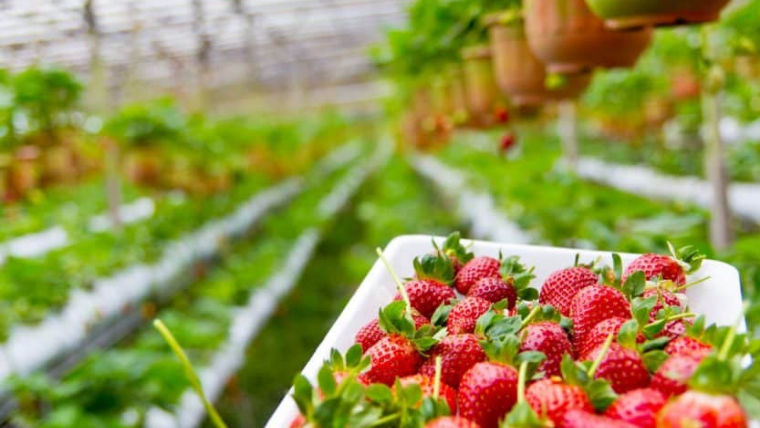
Gentle Handling After Harvest:
- Handle harvested strawberries with care to prevent bruising and damage.
- Avoid stacking or piling strawberries, as this can lead to compacting and spoilage.
- Place strawberries in shallow containers or trays in a single layer to allow for adequate air circulation.
Optimal Storage Conditions:
- Store harvested strawberries in a cool place with a temperature between 32°F to 36°F (0°C to 2°C) to maintain freshness.
Wash Before Consumption:
- Wash strawberries just before consumption rather than immediately after harvesting to extend their shelf life.
- Washing strawberries prior to storage can cause them to absorb excess moisture, increasing the risk of mold growth and spoilage.
- Keeping strawberries unwashed preserves their natural protective coating, reducing the chances of decay.
In the next section, we will explore troubleshooting common issues that may arise in indoor hydroponic strawberry cultivation and provide effective solutions to ensure successful harvests. Stay tuned for expert advice on maintaining your hydroponic strawberry system for optimal growth and yield.
Troubleshooting Common Issues in Indoor Hydroponic Strawberry Cultivation
When it comes to indoor hydroponic strawberry cultivation, it is not uncommon to encounter a few issues along the way. Understanding these common problems and knowing how to troubleshoot them is essential to ensure the success of your strawberry plants.

- Nutrient Deficiency and Imbalance:
- Monitor nutrient solution pH and EC levels regularly to ensure they are within the optimal range for strawberry growth.
- Deviations from the proper nutrient balance can lead to issues like stunted growth, yellowing leaves, or poor fruit development.
- Pest Infestations:
- Despite the reduced risk in hydroponics, indoor growers may still encounter pests like aphids, spider mites, and whiteflies.
- Implement preventive measures such as regularly inspecting plants and maintaining a clean growing environment to minimize the risk of pest infestations.
Regular inspection of your plants and the use of organic or chemical pest control methods, such as neem oil or insecticidal soap, can help keep these pesky invaders at bay. Additionally, maintaining proper air circulation and cleanliness in your growing area can help prevent pest infestations in the first place.
Tips for Extending the Strawberry Growing Season in Hydroponics
Extending the strawberry growing season in hydroponics can be a rewarding endeavor for gardening enthusiasts. By following a few key tips, you can maximize your strawberry harvest and enjoy fresh, delicious berries for an extended period of time.
Choose strawberry varieties with longer fruiting periods, such as ‘Eversweet’ and ‘Seascape’, for hydroponic cultivation.
These varieties can continue producing fruit for several months, ensuring a continuous harvest.
Consider day-neutral strawberry varieties like ‘Albion’ and ‘Selva’ that produce fruit consistently throughout the growing season, irrespective of day length.
Day-neutral varieties offer continuous fruiting, providing a steady supply of strawberries.
Keep daytime temperatures between 65 to 75°F (18 to 24°C) and nighttime temperatures around 60°F (15°C) to promote healthy growth and continuous fruit production.
Ensure adequate lighting with at least 12 to 16 hours of light per day for strawberries.
Use supplemental grow lights, especially in winter or indoor setups with limited natural light, to meet the plants’ light requirements.
Tips for Extending the Strawberry Growing Season in Hydroponics
| Aspect | Recommendations |
|---|---|
| 1. Variety Selection | – Everbearing Varieties: Choose everbearing strawberry varieties for extended fruiting periods. |
| – Day-Neutral Varieties: Consider day-neutral varieties that continuously produce fruit regardless of day length. | |
| – Research and Consult: Explore specific strawberry varieties known for extended harvests in hydroponic systems. | |
| 2. Temperature Control | – Cooling Systems: Implement cooling systems to maintain optimal temperatures, as strawberries prefer cooler conditions. |
| – Seasonal Adjustments: Adjust temperature controls based on the changing seasons to mimic preferred conditions. | |
| – Protect from Extremes: Shield plants from extreme heat or cold to prevent stress and encourage prolonged fruiting. | |
| 3. Light Management | – Supplemental Lighting: Provide supplemental lighting during shorter daylight periods to extend the effective growing season. |
| – Light Intensity: Ensure adequate light intensity for healthy growth and fruit development. | |
| – Light Duration Control: Adjust the duration of artificial light exposure to simulate longer days. | |
| 4. Nutrient Optimization | – Customized Nutrient Solutions: Tailor nutrient solutions to match the changing needs of strawberry plants during different growth stages. |
| – Regular Monitoring: Monitor nutrient levels and adjust accordingly to prevent deficiencies or excesses. | |
| – Enhanced Flowering Nutrients: Provide nutrients rich in phosphorus and potassium during flowering for better fruit set. | |
| 5. Hydroponic System Maintenance | – Cleanliness: Maintain a clean hydroponic system to prevent nutrient buildup and clogs that can affect plant health. |
| – Regular Inspections: Inspect the system regularly for signs of wear, leaks, or malfunctions. | |
| – Optimal pH and EC Levels: Monitor and control pH and electrical conductivity (EC) levels within the recommended ranges. | |
| 6. Pollination Strategies | – Hand Pollination: In the absence of natural pollinators, consider hand-pollinating strawberry flowers. |
| – Introduce Pollinators: If feasible, introduce bumblebees or other pollinators to enhance fruiting. | |
| – Encourage Natural Pollination: Optimize conditions to attract and support natural pollinators. | |
| 7. Pest and Disease Management | – Preventive Measures: Implement preventive measures to control pests and diseases that can impact plant health and yield. |
| – Regular Monitoring: Regularly inspect plants for signs of pests or diseases, addressing issues promptly. | |
| – Biological Controls: Explore the use of biological controls in hydroponic systems for sustainable pest management. |
By implementing these tips, you can lengthen the strawberry growing season in hydroponics and enjoy a plentiful harvest of these delectable fruits. Stay tuned for more valuable insights and guidance on optimizing your hydroponic strawberry cultivation journey.
Success Stories and Inspiring Examples of Indoor
In the world of indoor hydroponics, success stories and inspiring examples are abundant, leaving gardening enthusiasts with an endless source of motivation and encouragement.
Emma Thompson’s Journey:
- Emma, a passionate gardener, ventured into indoor hydroponics to grow strawberries in her apartment.
- Through careful research and dedication, she mastered hydroponic cultivation, resulting in thriving plants and delicious berries.
- Her success demonstrated the potential of indoor hydroponics, proving that anyone can enjoy homegrown strawberries regardless of space constraints.
Jake Reynolds’ Innovation:
- Jake, a hydroponics enthusiast, incorporated advanced LED lighting techniques into his indoor strawberry cultivation.
- By manipulating light wavelengths and intensities, he optimized growth cycles, enabling year-round strawberry harvests.
- His innovative approach showcased the versatility of indoor hydroponics and opened doors for potential commercial applications.
Inspiring Success Stories:
- These examples illustrate the limitless possibilities of indoor hydroponics, inspiring gardening enthusiasts to explore this innovative method.
- By embracing hydroponics, individuals can overcome traditional gardening constraints and cultivate thriving strawberry gardens at home.
- The future of indoor hydroponics looks promising, with passionate gardeners like Emma and Jake pushing the boundaries of what’s possible.
Watch video for more information:
FAQ
What are the advantages of growing strawberries indoors using hydroponics?
Indoor hydroponics for growing strawberries offers several benefits, such as increased yield, faster growth, year-round cultivation, efficient use of resources (water and nutrients), and protection against pests and diseases.
Which strawberry varieties are best suited for hydroponic cultivation?
When selecting strawberry varieties for hydroponic cultivation, it is important to choose those that are known for their compact growth habit, disease resistance, and high yield. Some recommended varieties include Albion, Seascape, and San Andreas.
What are the nutrient requirements of strawberries in hydroponics?
Strawberries in hydroponics require a nutrient solution that is rich in essential elements such as nitrogen, phosphorus, potassium, calcium, and magnesium. They also benefit from the addition of micronutrients like iron, manganese, and zinc.
How do I set up a hydroponic system for optimal strawberry growth?
To set up a hydroponic system for strawberries, you will need a nutrient reservoir, a water pump, growing trays, a pH meter, an electrical conductivity (EC) meter, and a timer for irrigation. Detailed instructions can be found in our article on setting up a hydroponic system for strawberry cultivation.
What is the best growing medium to use for strawberries in indoor hydroponics?
Strawberries can be grown in various growing media, including coconut coir, perlite, vermiculite, and rockwool. Each medium has its advantages and disadvantages, so it is important to choose one that suits your specific needs and preferences.
How do I provide adequate lighting for strawberry plants in hydroponics?
LED grow lights are commonly used in indoor hydroponics for providing the necessary light spectrum and intensity for strawberry plants. The lights should be positioned at an appropriate distance from the plants and their duration should mimic natural sunlight.
What temperature and humidity levels are ideal for strawberry cultivation in hydroponics?
Strawberry plants thrive in temperatures between 60-75°F (15-24°C) during the day and slightly cooler temperatures at night. The relative humidity should be maintained around 70-80% for optimal growth and fruit development.
How often should I water hydroponic strawberries and what techniques should I use?
The frequency of watering hydroponic strawberries depends on the stage of plant growth and the specific hydroponic system being used. Generally, strawberries require frequent but short irrigation cycles to ensure the roots receive sufficient moisture.
How do I control pH levels for healthy strawberry growth in hydroponics?
Monitoring and adjusting the pH of the nutrient solution is crucial for optimal strawberry growth. The pH level should be maintained between 5.5 and 6.5, as deviations can lead to nutrient deficiencies or toxicities.
How do I manage nutrient solution concentrations for maximum strawberry yield?
Regular monitoring of the electrical conductivity (EC) of the nutrient solution is necessary to ensure the appropriate nutrient concentration for strawberry plants. Adjustments can be made by diluting or adding nutrient solution as needed.
How can I prevent and manage common pests and diseases in hydroponic strawberries?
Integrated pest management practices, such as maintaining a clean growing environment, introducing beneficial insects, and using organic pesticides, can help prevent and manage pests and diseases. Regular monitoring and early intervention are key to success.
What pruning and training techniques should I use for enhanced strawberry production?
Pruning and training techniques, such as removing runners, thinning foliage, and trellising, can promote better airflow and light penetration, leading to improved fruit production and quality in hydroponic strawberries.
How can I pollinate my indoor hydroponic strawberry plants?
Unlike outdoor cultivation, indoor hydroponic strawberry plants may require manual pollination. This can be done using a small brush or by gently shaking the plants to distribute pollen. Alternatively, you can introduce bees or other pollinators to the indoor environment.
How do I harvest and store hydroponic strawberries for longevity and freshness?
Hydroponic strawberries should be harvested when fully ripe, typically when they have a vibrant red color. They should be handled with care and stored in a cool, dark place or refrigerated to maintain their freshness and extend their shelf life.
What are some common issues in indoor hydroponic strawberry cultivation and how can I troubleshoot them?
Common issues in indoor hydroponic strawberry cultivation include nutrient deficiencies or imbalances, pH fluctuations, temperature extremes, and pest infestations. By regularly monitoring and adjusting environmental conditions, nutrient solutions, and pest control measures, many of these issues can be prevented or addressed promptly.
How can I extend the strawberry growing season in hydroponics?
The strawberry growing season in hydroponics can be extended by manipulating environmental conditions, such as temperature and lighting, to mimic different seasons. Additionally, selecting day-neutral or everbearing strawberry varieties can allow for continuous fruit production throughout the year.

Studied Agricultural Engineering-Plant Protection at University of California, Davis.
Head of Content writing team at Southelmontehydroponics.com

